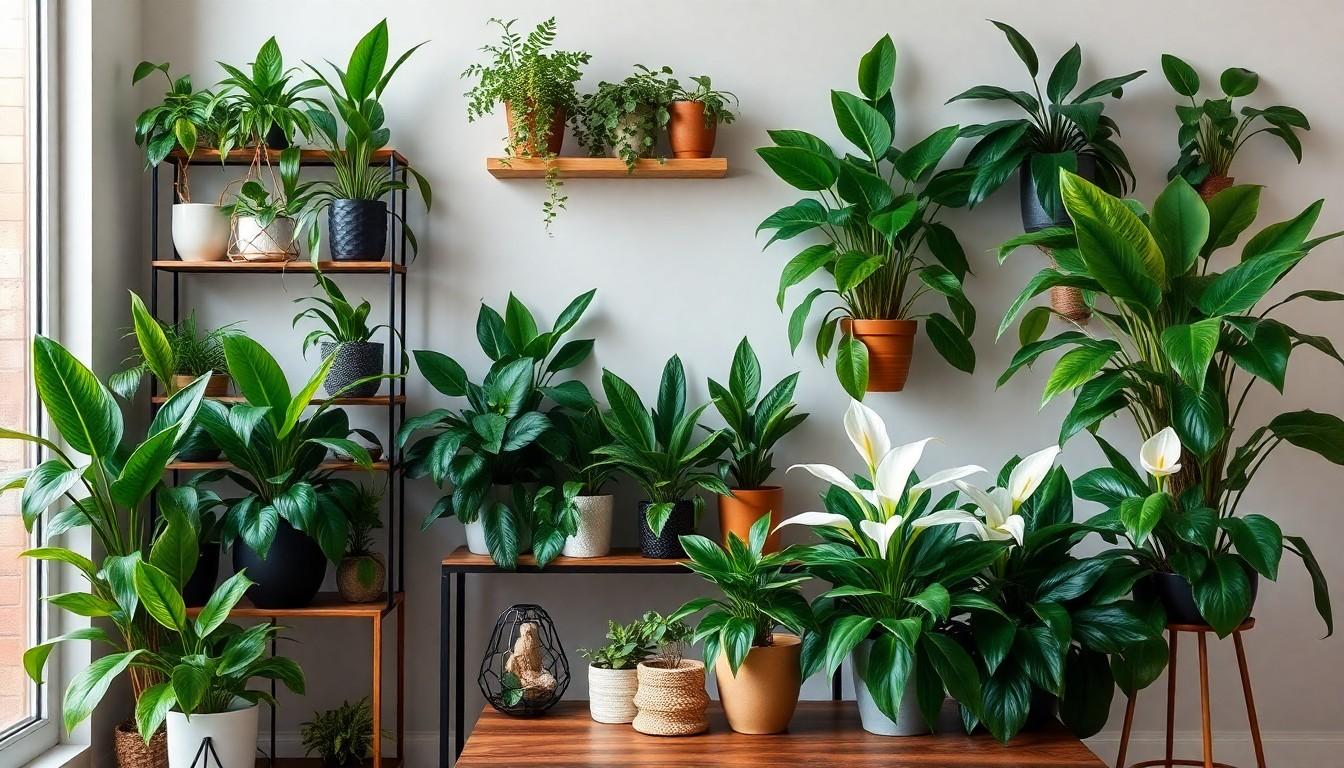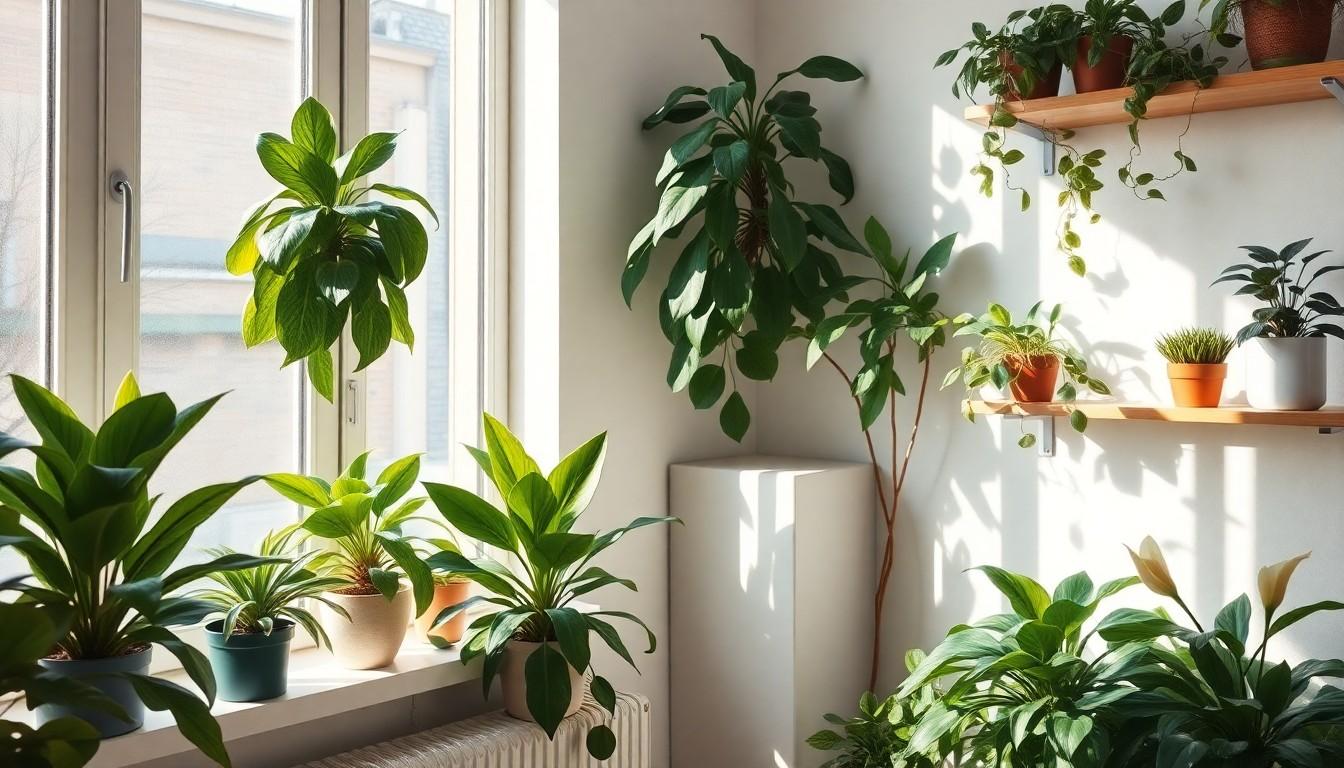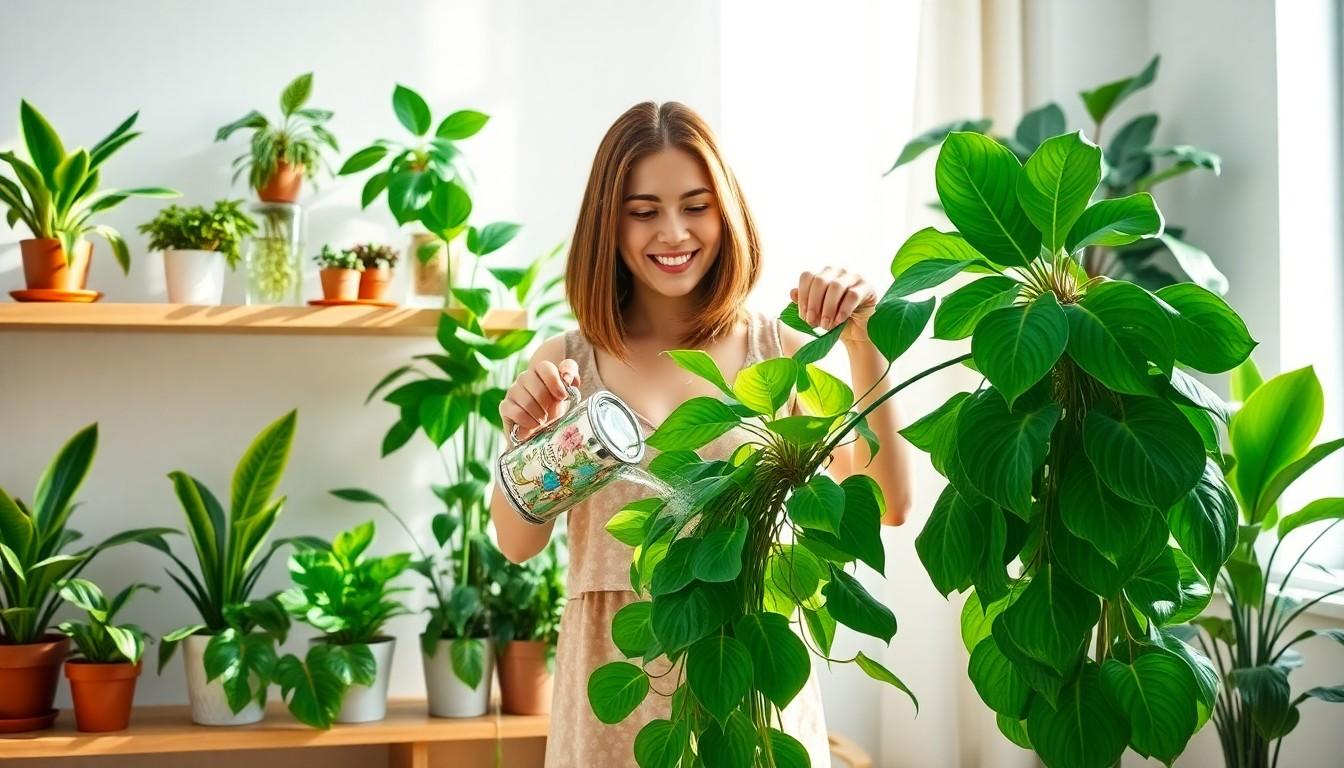In a world where everything seems to be digital and fast-paced, house plants are the unsung heroes of tranquility. They don’t just sit there looking pretty; they purify the air, boost mood, and might even judge your Netflix choices. Imagine transforming your home into a lush oasis right under your roof. Who wouldn’t want that?
Benefits Of House Plants Nearby
House plants provide numerous advantages, especially when positioned close to living spaces. Improved air quality and enhanced mood and productivity are two key benefits worth exploring.
Improved Air Quality
House plants improve air quality by absorbing carbon dioxide and releasing oxygen. Some species, like peace lilies, effectively filter toxins such as formaldehyde and benzene. Indoor plants contribute to higher humidity levels, which can alleviate respiratory issues. Studies show that rooms with house plants can have up to 50% fewer airborne toxins. More plants equate to better overall air quality, supporting healthier environments.

Enhanced Mood And Productivity
House plants significantly enhance mood by creating a more inviting atmosphere. Studies indicate that being around greenery reduces stress and anxiety levels. Increased focus often accompanies a natural setting, improving productivity rates. A simple addition of plants in workspaces can lead to noticeable boosts in creativity. Incorporating greenery not only brightens up the space but also ensures a more vibrant mental state.
Choosing The Right House Plants Nearby
Selecting suitable house plants involves considering specific environment needs and personal preferences. Various options thrive in different conditions.
Low-Light Plants
Low-light plants adapt well to dim spaces, making them perfect for rooms with limited sunlight. Snake plants excel as they require minimal care and can tolerate neglect. Pothos also rates high due to its trailing vines and resilience. ZZ plants feature glossy leaves and suit low-light situations effectively. Peace lilies bloom beautiful white flowers even under low light, showcasing elegance in any space. Spider plants offer air-purifying traits, along with a playful appearance. These choices create inviting atmospheres without the need for extensive sunlight.
Pet-Friendly Options
Pet-friendly plants provide safety for households with furry companions. Spider plants rank as safe for both cats and dogs, ensuring peace of mind. Boston ferns thrive with minimal effort and don’t pose risks to pets. Calathea offers stunning foliage while being non-toxic. Parlor palms adapt well to various environments without harming animals. Areca palms also create lush greenery, promoting wellness in homes with pets. Selecting these plants ensures both aesthetics and safety in shared spaces.
Placement Tips For Optimal Growth
Positioning house plants effectively enhances their growth and overall well-being. Consider the unique requirements of each plant to promote a thriving indoor environment.

Sunlight Requirements
Many house plants depend on specific sunlight exposure. Direct sunlight suits succulents and cacti, while indirect light benefits plants like pothos and peace lilies. Low-light species, including snake plants and ZZ plants, adapt well to dim areas. Observe location changes, especially during seasonal shifts, as natural sunlight varies throughout the year. Rotating plants ensures even light distribution, which fosters balanced growth.
Space Considerations
Adequate space impacts plant health significantly. Crowding plants restricts airflow, increasing vulnerability to pests and diseases. Furthermore, maintaining distance ensures that each plant receives enough light. Consider the mature size of plants when selecting their spots. Grouping smaller plants together encourages a harmonious aesthetic while providing sufficient room for growth. Assess vertical space too, as climbing plants, like philodendron, benefit from trellises or walls in tight areas.
Maintenance And Care Tips
House plants thrive with proper care. Maintaining them can ensure their growth and health.
Watering Guidelines
Watering frequency depends on the plant’s type and environment. Generally, soil moisture checks help determine when to water. Assure the top inch of soil is dry before adding water for most house plants. Overwatering leads to root rot, while underwatering results in wilted, unhappy plants. During winter months, indoor plants often require less water due to decreased light and cooler temperatures. That’s when a more cautious approach benefits plant health. Using room temperature water also prevents shock. Moreover, watering in the morning allows plants to absorb moisture throughout the day before nighttime temperature drops.
Pest Control Strategies
Addressing pests quickly prevents damage to house plants. Regular inspections help catch infestations early. Look for common pests such as spider mites and aphids. Natural remedies like insecticidal soap or neem oil provide effective treatment without harsh chemicals. Additionally, introducing beneficial insects like ladybugs can control pests naturally. Maintaining cleanliness around plants ensures pests don’t have hiding spots. Regularly wiping leaves minimizes dust and pest buildup. Quarantining new plants allows for monitoring before introducing them to existing greenery. Keeping humidity levels balanced also deters pests, as many prefer dry conditions.
Conclusion
Embracing house plants nearby can transform any space into a serene retreat. They not only enhance aesthetics but also promote healthier living environments. With their ability to purify the air and uplift mood, these green companions play a vital role in daily life.
Choosing the right plants tailored to individual needs ensures success in plant care. By considering light requirements and maintenance routines, anyone can cultivate a thriving indoor garden. Ultimately, the presence of house plants fosters a sense of well-being and connection to nature, making them an invaluable addition to any home or workspace.

